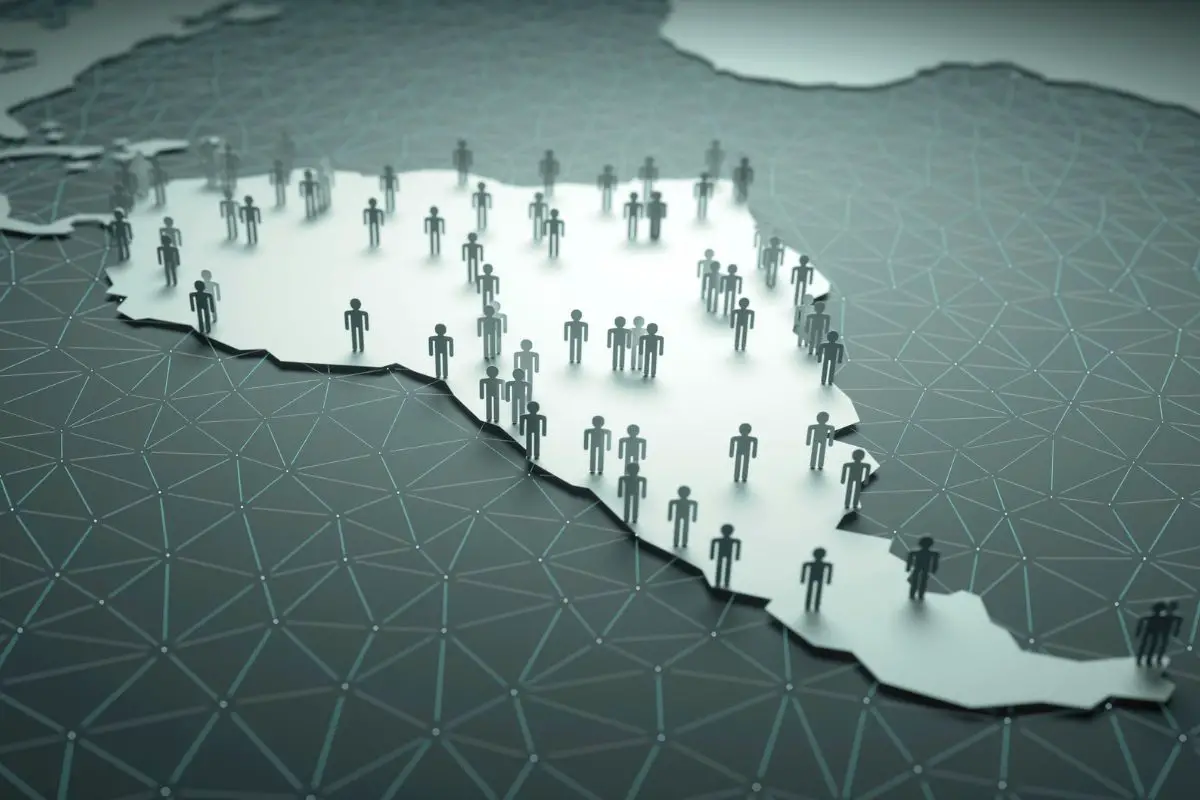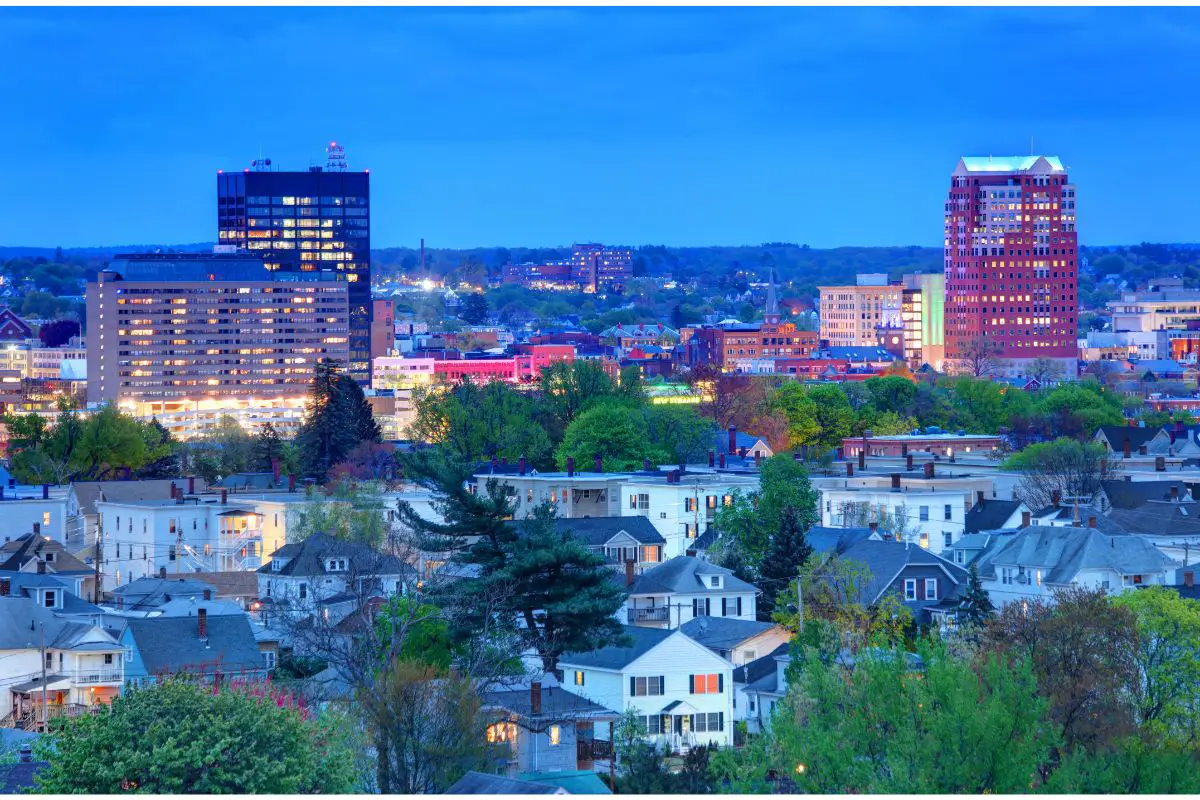New Hampshire, being one of the original 13 colonies that originally rebelled against the British, has one of the longest histories among the modern US states, playing a pivotal role in many first steps of American history.
As we’ve said, it was one of the first states to rebel against the British, but it was also one of the first states where primaries were held for American presidential elections, it was one of the most active states where abolitionism was practiced in the 19th century and plenty of other key historical events.

For a corner of the country that has seen so much of its history, as well as be a player of it, just as important as that is the history of the people who have lived here as well.
This is why, in this piece, we’re going to take a little dive into the history of the demographics of this US state. After all, with such a long history, there have been plenty of people that have come and gone from this old corner of the country!
Pre-Colonial America
Before we cover the history of demographics of the modern state of New Hampshire, it is worth acknowledging the long history of people that have lived in and around the corner of North America before the first settlers made that arduous voyage across the Atlantic.
The North East region of North America had long been the home of several Algonquin-speaking people from many different Abenaki communities, with the two most prominent being the Androscoggin and Pennacook nations, among many other smaller tribes that were a part of the wider Wabanaki confederation in the New England region.
Many of these groups, despite all being a part of the same language family, also had massively diverse cultures and customs from one another, even from other Algonquin communities.
Many Native American communities would later be devastated following first contact with colonial settlers, due to conflicts, disease, and colonization of the region.
First American Settlements
While the New England region would be visited by many European explorers in the centuries before colonial America truly gets started, it is in the early 17th century when we see New Hampshire start to properly form as its state.
As with many of the first settlers on the East Coast United States, many of the first wave of colonists to the region were predominantly English.
However, during the late 17th and early 18th centuries, there would also an increasingly large number of Irish and Scottish immigrants to the region, along with many French Canadians
Post-Revolutionary New Hampshire To 20th Century
The post-revolutionary period was dominated by the wider expansion of the United States-controlled territories, and the subsequent changes in demographics and population that came with its expansion westward, and even south as territories such as Texas and Florida, which had previously been controlled by Spain and Mexico (itself considered a colony of Spain until the early 19th century), were given or won by the United States due to agreements and treatises.
New Hampshire would also see its demographics change over this time, as America’s expansion also included a change in demographics here, as it did across the rest o the country.
However, despite the increasingly diverse population of the United States across the 19th century, the most notable difference comes in the form of mass emigration from the state taking place as many families and individuals moved westward.
Outside of this notable exodus, there was surprisingly little overall shifting in the state’s population.
It’s during the late 19th and early 20th century when we start to see a noticeable shift in demographics once again, as America’s involvement in global politics also shifts.
Modern New Hampshire

So, all of these contributing factors leave us with the modern demographic of New Hampshire, which, is considered quite different from the US’s average in many ways.
Overall Population
The population since the founding of New Hampshire has been an interesting case, with the population seeing a mostly steady increase from 1790 of around 141,885, to around 1,377, 529 in 2020. The only noticeable decrease is between 1860 and 1870.
The most noticeable spikes in population growth happen between 1790 and 1830, as well as between 1950 and 1990.
Ethnicity
Generally speaking, the vast majority of New Hampshire’s population is descended from white European ancestry to an overwhelming degree.
Ancestry that does not come directly from the British Isles comes from the high percentage of French Canadians that also make up a large percentage of this demographic, with its proximity to the Canadian border.
The next largest ethnic demographic in New Hampshire is people of Latino or Hispanic descent, with them making up the largest minority in the state.
Outside this, the next largest demographic is people with Asian ancestry, followed by African Americans and people with mixed-race heritage, with indigenous and Hawaiian and other Pacific islanders making up the smallest ethnic demographics.
This is a stark contrast to the rest of the United States, where
Over the past 30 years, there, has been a slight, but still statistically relevant change in the overall ethnic demographic of the state, with the overall percentage shifting from 98% white in 1990, to around 89.9% in 2020.
Still, these changes leave New Hampshire with the fourth-highest share of white residents in the country.
Age Groups
Outside of its above-average percentage white population, age is another demographic where New Hampshire is considered away from the average, which currently skews towards an older population than the national average.
While the percentage of residents in the United States is around 16.5%, the percentage of this demographic in New Hampshire is around 18.7%.
Thai combined with an overall larger percentage of people that would be considered part of the baby boomer generation means that the median age in New Hampshire is 43.1, making it the 2nd oldest in the country, behind Maine.
Migration
Despite the culture that has emerged from New Hampshire as a state that can track its family lineages, migration is another area that is considered out of the ordinary.
The number of residents who are born in New Hampshire is significantly below half, with only 41.3% of the residents in the state being native.
This puts it significantly below the nationwide average, where the mean number is around 57.2%, and well below the average for other New England states, which sits at around 54.3%.
Interestingly enough, the older population of the state, combined with the higher migration numbers, means that adults over the age of 25 born in the state are only around a third.
Final Thoughts
So, as you can see, when it comes to state demographics, New Hampshire is a place that seems to buck a lot of trends that have happened and continue to be happening across the country.
However, statistics and demographics are only part of the story, and they can also change in relatively little time.
In the space of around 400 or so years, the population has changed massively, a relative blink of an eye in the scale of human movement and migration across the world.
Who knows where the story of the people who live three will take New Hampshire next?



